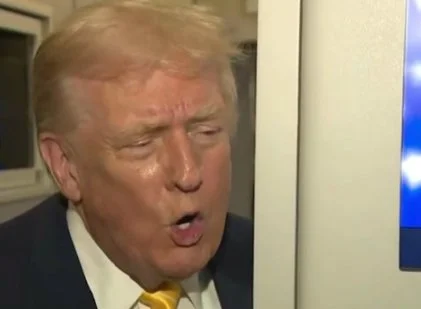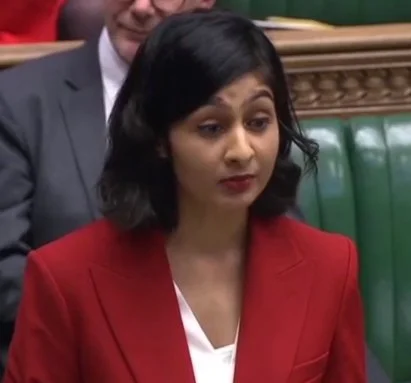Donald Trump’s Treatment of the Press
The Central Role of Presidential Language
American presidents shape the national stage not only through policy but through the way they speak. Presidential language frames reality for millions, organizes public emotion, signals norms and boundaries, and tells people what kind of world they inhabit. This rhetorical dimension of the presidency is not decorative. It is central to democratic health. Which is why Donald Trump’s particular style of engaging the press deserves clear, unsentimental scrutiny. His verbal attacks on journalists, especially women, reveal patterns that political psychologists identify as classic hallmarks of dominance oriented leadership. They also reveal a deeper institutional danger. In Trump’s hands, the presidential podium becomes a tool for humiliation, boundary marking, and punishment rather than debate, accountability, and shared democratic responsibility.
Antagonistic Dominance in Political Psychology
Trump’s treatment of the press is not merely combative. It is personal, demeaning, and intentionally destabilizing. Political psychology provides a straightforward explanation. Trump practices what is known as antagonistic dominance. This leadership style relies on constant demonstrations of superiority, public put downs, and challenges to perceived critics. In leaders with this profile, insults are not slips of temper. They are instruments of control. By belittling reporters and casting doubt on their motives, Trump reduces the perceived legitimacy of any institution that questions him. This strategy is psychologically coherent, but deeply anti democratic. It shifts the president from steward of public accountability to architect of personal loyalty tests.
The Mechanics of Degrading Language
Consider the language itself. Trump uses personal insults that rely on emotional degradation. He labels journalists nasty, terrible, losers, third rate, or fake. He regularly frames questions as personal attacks and responds by attacking the questioner rather than the subject of inquiry. In his most recent outburst he told Bloomberg reporter Catherine Lucey to be quiet, followed by the word piggy, a term that carries gendered contempt and classic dehumanizing mechanics. Discourse analysts would note that this insult works on two levels. It marks the reporter as inferior and it signals to the audience that she is unworthy of full participation in civic dialogue. Dehumanizing language, even when delivered flippantly, has predictable effects. It lowers empathy, increases aggression, and reshapes norms of acceptable discourse. A president who speaks this way implicitly invites the public to treat his critics with the same contempt.
Delegitimizing Accountability Through Humiliation
This is not a small matter. When the most powerful office in the nation uses the microphone in this way, it models permission structures. Trump frames challenges to his authority as acts of hostility and then invalidates the challenger through shaming. The point is not to answer the question. The point is to make the questioner feel like the one who has broken rules of civility. This inversion trick is one of Trump’s most consistent rhetorical habits. He violates norms in order to claim that someone else has violated norms. It is emotionally disruptive and it places reporters in a double bind. If they push back, they appear combative. If they do not, they allow the insult to stand. This is precisely the dynamic Trump exploits.
Reporters as Adversaries Rather Than Public Servants
Political psychologists have long studied leaders with high dominance orientation and low agreeableness. These leaders view interactions through the lens of contest rather than cooperation. Journalists in this framework are not partners in public accountability. They are adversaries to be defeated. Trump shows consistent signs of this perception. He uses the press room as an arena. Reporters become foils in a story where he alone is the truth teller and critics are enemies. In this story there are no neutral questioners. There are only supporters, opponents, and targets. This worldview, if normalized, turns the press into an instrument of personal combat rather than a pillar of democratic infrastructure.
Why Trump’s Language Breaks Presidential Norms
Discourse analysis helps us understand why Trump’s language shocks even seasoned observers. His attacks disrupt every expectation of presidential speech. For most modern presidents, criticism of the press is strategic and policy oriented. Obama, for example, sometimes expressed frustration with coverage but consistently affirmed the press as essential to accountability. Even in tense moments he spoke with intellectual precision and restraint. His criticisms focused on systems rather than individuals and he often used the opportunity to reaffirm that the press had the right and duty to challenge him.
Trump takes the opposite approach. His language breaks from decades of presidential norms not through complexity but through simplicity. His insults are blunt, visceral, and aimed at identity. He attacks intelligence, professionalism, appearance, and motives. This style of speech is familiar not in democratic leadership but in authoritarian populism. Leaders who rely on emotional us versus them dynamics typically use language that is direct, personal, and identity focused. It rallies supporters by simplifying enemies. It communicates that power does not need to explain itself. It only needs to dominate.
The Authoritarian Logic Behind Trump’s Speech
The danger is not that Trump insults reporters. The danger is that he reframes the cultural meaning of journalism. In Trump’s rhetorical universe, the press is not a watchdog of the powerful. It is an opponent that must be publicly weakened. This is a classic authoritarian move. When leaders attack the press, they are not reacting only to stories they dislike. They are also shaping the ecosystem in which future stories are interpreted. If the public internalizes the idea that reporters are liars, enemies, or in Trump’s words piggies, then truth becomes negotiable and power enjoys a freer hand.
It is tempting to treat Trump’s language as improvisational or impulsive. That interpretation undersells the pattern. Trump’s attacks on the press follow clear psychological and rhetorical logic. They reinforce an identity hierarchy with Trump at its apex. They delegitimize institutions that constrain him. They humiliate individuals who question him. And they demonstrate loyalty expectations to followers who see his aggression as a sign of strength. Whether intentional or instinctive, the effect is the same. The presidency becomes not a public office but a platform for symbolic domination.
The False Aura of Authenticity
Trump’s supporters often argue that he is merely speaking plainly. But plain speech is not the same as demeaning speech. When a president tells a female journalist ‘quiet piggy’, it is not candor. It is contempt. It is meant to reduce the target and inflate the speaker. It is meant to rally those who delight in transgression and intimidate those who would hold power accountable. This is not the authenticity of a blunt truth teller. It is the performance of a man who equates cruelty with authority.
Two Incompatible Visions of the Press
Obama once told reporters that their job was to hold leaders like him accountable. He articulated a vision of the press that framed scrutiny as essential to democratic strength. Trump articulates a very different vision. In his world scrutiny is disloyalty. Tough questions are personal attacks. Journalists are enemies. And a president’s power is measured by how effectively he can belittle or exclude those who question him. These two approaches represent fundamentally incompatible models of leadership. One seeks to engage with institutional norms. The other seeks to erode them.
The Real Threat Revealed
This is the core truth that becomes unavoidable when examining Trump through the lens of political psychology and discourse analysis. His treatment of the press is not a side feature of his presidency. It is a central mode of operation. It tells us what he values, what he fears, and what he wants the public to believe. Trump uses language as a weapon. Obama used language as an instrument of explanation. One employed the bully pulpit as a platform for civic reasoning. The other uses it as a pulpit for bullying.
American democracy is not fragile because people disagree. It is fragile when those with power attempt to delegitimize the structures that allow for disagreement in the first place. A president who treats journalists as enemies and resorts to dehumanizing language does not merely attack individuals. He erodes the norms that make democratic contest possible. In that sense, Trump’s latest insult is not just a moment of bad behavior. It is a microcosm of a presidency that sees accountability as an irritant and truth as negotiable.
Simply Put
In the end, what matters is not the offense taken by reporters but the message sent to the public. A president who belittles the press invites the nation to ignore it. A president who degrades questioners invites followers to do the same. And a president who treats inquiry as insolence tells the country that power does not answer to anyone. That is the real threat. Not the insult itself, but the worldview it reveals.
Sources
Times Trump Has Lashed Out at Reporters During COVID-19 Briefings - Business Insider
Obama’s Farewell to Journalists (and America): ‘Good Luck’ – Foreign Policy
'Quiet, piggy': Trump responds to reporter after Epstein question - BBC News








